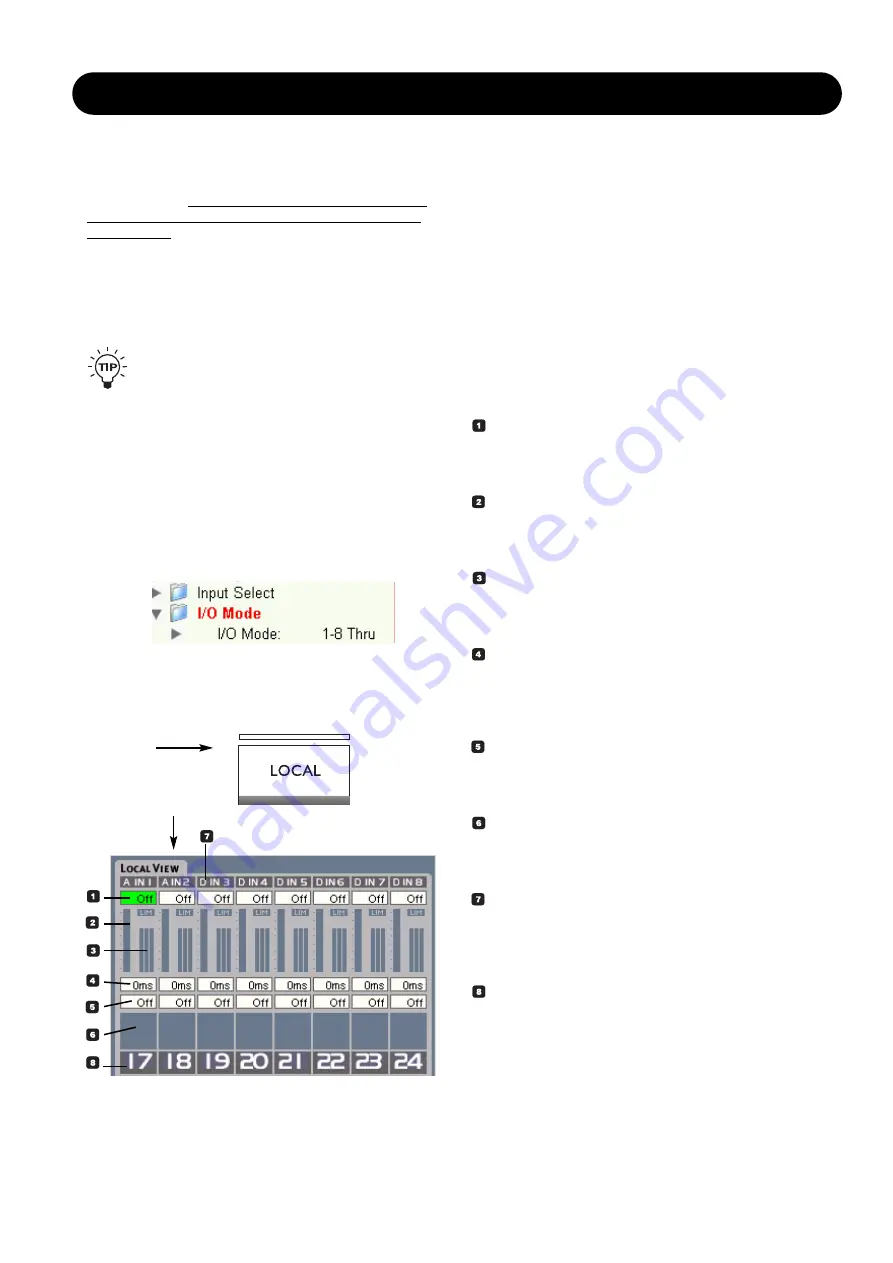
19
LOCAL VIEW
Local page - Introduction
The Local page supplies you with an overview of what is
assigned and processed to the Inputs on the physically
selected device.
This means that the Local page is static
on the individual devices, and cannot be accessed from
other devices!
The Local page can be used to get an overview of the I/O's
on the individual devices, e.g. which Cluster Channel
numbers they are assigned to, and whether Input and
Output signal is present.
At the Local page there will always only be
displayed the number of I/O's available in the
device. This way it is possible to quickly see if the
unit is a 2, 4 or 8 channel device.
Local page - I/O modes
The EQ Station offers two different I/O modes:
• 1-8 Thru mode
• Mixer/Matrix mode
Switching between the two modes is done at the Setup
page.
Press.....
....to access
1-8 Thru mode
1-8 Thru mode
is made for applications where multiple
mono- or stereo-paired channels are required, e.g. for
monitor mix setups.
It is possible to monitor current state of the channels in the
device, and you can adjust In Level, Out Level and Delay
settings on each individual channel.
The I/O channels are connected “straight thru”; meaning
what is received on e.g. channel 1 is also Output on
channel 1.
Basic Operation
• Select channel using the CHANNEL wheel.
• Select parameter using the UP/DOWN cursor keys.
• Set values using the ADJUST wheel.
Channel Input Level Trim
Range: Off, -120dBFS to 0dBFS
Adjustable Input level per channel.
Out Level Indication (fader)
Range: Off, -120dBFS to 0dBFS
Fader position indicates the current set Out level.
Gain Reduction Meters
2 or 3 gain reduction meters depending on the selected
Dynamic EQ type.
Delay Time
Range: 600ms
Individual Delay time per channel to match wedge,
speakers physical position or adjust delay lines.
Channel Output Level
Range: Off, -120dBFS to 0dBFS
Metric indication of the set Output level.
Channel Icon
A relevant Icon can be assigned to each channel for fast
identification. E.g. a microphone, guitar etc.
Input format indicator
Overload LED for all channels. Adjust the Output level on
the feeding device or use the Input level trim on the EQ
Station.
Channel Number
The number of the channel.
















































